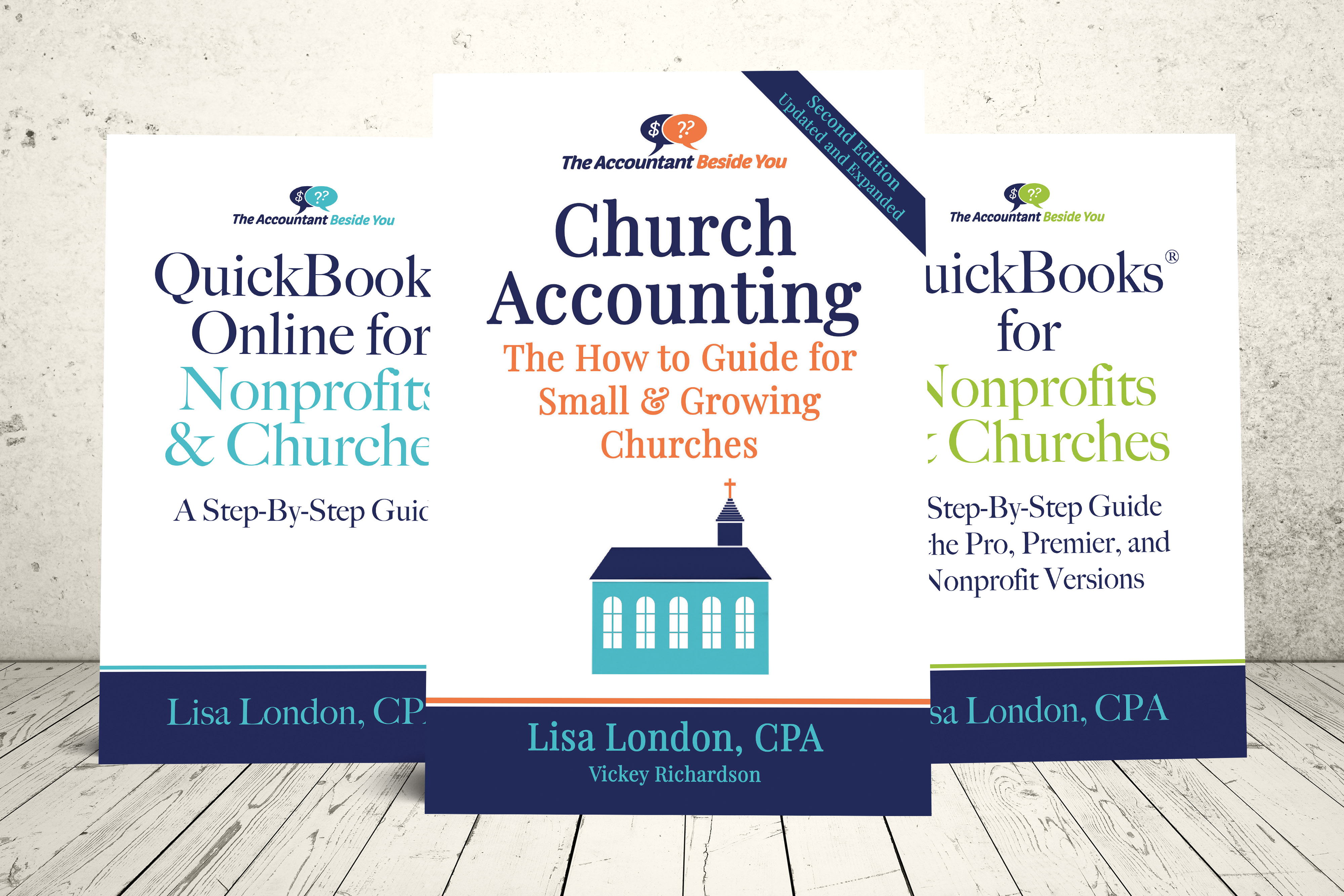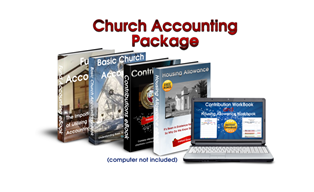Internal Audit Checklist
FINANCIAL STATEMENTS
- Are monthly financial statements prepared on a timely basis and submitted to the church board or appropriate person or committee?
- Do the financial statements include all funds (unrestricted, temporarily restricted, and permanently restricted)?
- Are account balances in the financial records reconciled with amounts presented in financial reports?
Church Accounting Package
A set of 4 ebooks that covers the following topics...
- Fund Accounting Examples and Explanations
- Setting up a fund accounting system
- Donation management
- Minister compensation and taxes
- Internal controls and staff reimbursements
- Much more - Click here for details

CASH RECEIPTS
General
- Are procedures established to care for offerings and/or monies delivered or mailed to the church office between services or the nonprofit's location?
- Are at least two unrelated members of the counting committee present when offerings are counted?
- Do money counters verify that the contents of the offering envelopes are identical to the amounts written on the outside of the envelopes?
- Are money counters rotated so the same people are not handling the funds each week?
- Are donor-restricted funds properly identified during the process of counting offerings?
- Are two members of the offering counting team in custody of the offering until it is deposited in the bank, placed in a night depository, or the church’s safe?
- Are all funds promptly deposited? Compare offering and other receipt records with bank deposits.
- Are donations for restricted purposes properly recorded in the accounting records?
- Are restricted funds held for the intended purpose(s) and not spent on operating needs?
Offering counting for Churches
Depositing of funds
Restricted funds
DONATION RECORDS/RECEIPTING
- Are individual donor records kept as a basis to provide donor acknowledgments for all contributions?
- If no goods or services were provided (other than intangible religious benefits) in exchange for a contribution, does the receipt include a statement to this effect?
- If goods or services (other than intangible religious benefits) were provided in exchange for a contribution, does the receipt inform the donor that the amount of the contribution that is deductible for federal income tax purposes is limited to the excess of the amount of any money and the value of any property contributed by the donor over the value of the goods and services provided by the organization, and provide the donor with a good faith estimate of the value of such goods and services?
- Although not required by the IRS, has your organization adopted a policy of issuing an annual contribution report to donors listing at least each week’s donations, if not each donation?
- Are the donations traced from the weekly counting sheets to the donor records for a selected time period by the audit committee?
CASH DISBURSEMENTS
- Are all disbursements paid by check except for minor expenditures paid through the petty cash fund?
- Is written documentation available to support all disbursements?
- If a petty cash fund is used, are vouchers prepared for each disbursement from the fund?
- Are pre-numbered checks used? Account for all the check numbers including voided checks?
PETTY CASH FUNDS
- Is a petty cash fund used for disbursements of a small amount? If so, is the fund periodically reconciled and replenished based on proper documentation of the cash expenditures?
BANK STATEMENT RECONCILIATION
- Are written bank reconciliations prepared on a timely basis? Test the reconciliation for the last month in the fiscal year. Trace transactions between the bank and the books for completeness and timeliness.
- Are the bank reconciliation reports signed and dated?
- Are there any checks that have been outstanding over three months?
SAVINGS AND INVESTMENT ACCOUNTS
- Are all savings and investment accounts recorded in the financial records? Compare monthly statements to the books.
- Are earnings or losses from savings and investment accounts recorded in the books?
LAND, BUILDINGS, AND EQUIPMENT RECORDS
- Are there detailed records of land, buildings, and equipment including date acquired, description, and cost or fair market value at date of acquisition?
- Was an equipment physical inventory taken at year-end?
- Have the property records been reconciled to the insurance coverages?
ACCOUNTS PAYABLE
- Is there a schedule of unpaid invoices including vendor name, invoice date, and due date?
- Are any of the accounts payable items significantly past-due?
- Are there any disputes with vendors over amounts owed?
INSURANCE POLICIES
- Is there a schedule of insurance coverage in force? Reflect effective and expiration dates, kind and classification of coverages, maximum amounts of each coverage, premiums, and terms of payment.
- Is Workers’ Compensation insurance being carried if your state requires it?
AMORTIZATION OF DEBT
- Is there a schedule of debt such as mortgages and notes?
- Have the balances owed to all lenders been confirmed directly in writing?
- Have the balances owed to all lenders been compared to the obligations recorded on the balance sheet?
SECURITIES AND OTHER NEGOTIABLE DOCUMENTS
- Does the organization own any marketable securities or bonds? If so, are they kept in a safety deposit box?
- Have the contents of the safety deposit box been examined and recorded?
PERSONNEL MATTERS
Does the organization maintain the following documents?
- Applications for employment
- W-4 forms for each employee
- Personnel files
- Employee handbook
- I-9 form
FEDERAL REPORTING OBLIGATIONS
- Does the organization file on a timely basis the following forms if applicable? Federal payroll tax forms (Form 941, Form W-2, Form W-3, Form 1099-MISC)





